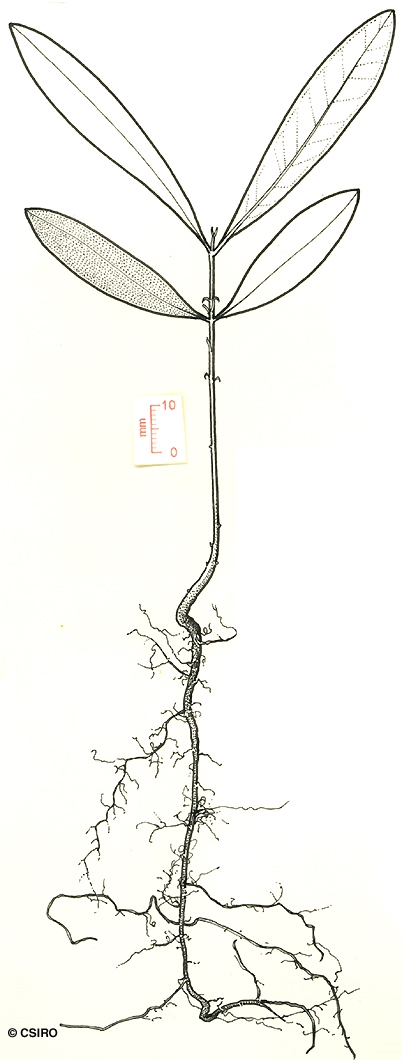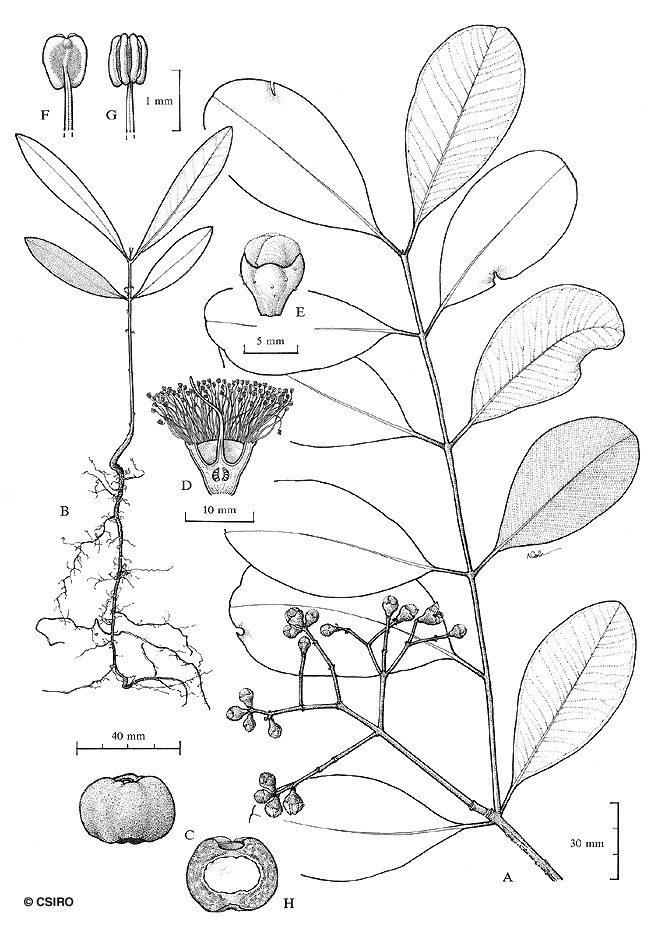Australian Tropical Rainforest Plants - Online edition
Syzygium forte subsp. potamophilum B.Hyland




Hyland, B.P.M. (1983) Australian Journal of Botany Supplementary Series 9: 90. Type: B. Hyland 3373 RFK: Katherine Gorge, 22.xi.1975. (holotypus QRS).
Flaky Barked Satinash; White Apple; Apple, White; Satinash, Flaky Barked
Bark usually somewhat pink, reddish or reddish brown, generally papery, but sometimes forming hard patches in places.
Inflorescence terminal on branches produced below or back from the leaves or inside the crown of the tree, bracts deciduous, absent at anthesis. Calyx tube (hypanthium) + pedicel about 5-9 mm long, calyx tube (hypanthium) about 5-8 mm diam., calyx lobes +/- uniform, rounded, about 1-3 mm long. Petals +/- orbicular, about 6.5-7.5 mm diam., oil dots visible, small, about 100 or more per petal. Outer staminal filaments about 9-15 mm long, anthers about 0.8-0.9 x 0.6 mm, gland terminal, near the back of the anther. Ovules about 20-40 per locule, placentas central, ovules radiating, ascending. Style about 8-17 mm long, approximating or shorter than the stamens.
Fruits depressed globular, about 25 x 30 mm., calyx lobes generally persistent, about 1.5 mm long, pericarp fleshy. Seed solitary, about 15-25 mm diam., testa adhering to the pericarp and adhering slightly to the rugose surface of the cotyledons by means of granular horny intrusions, cotyledons uniformly textured, except for the +/- ruminate peripheral section.
Although this subspecies grows large enough to produce millable logs they are seldom utilized for the production of sawn timber because of the scattered distribution of trees and the sparse human population in the area where they occur.
Wood specific gravity 0.74-0;.93. The fruit is sometimes eaten but has no commercial value. Hyland (1983).





